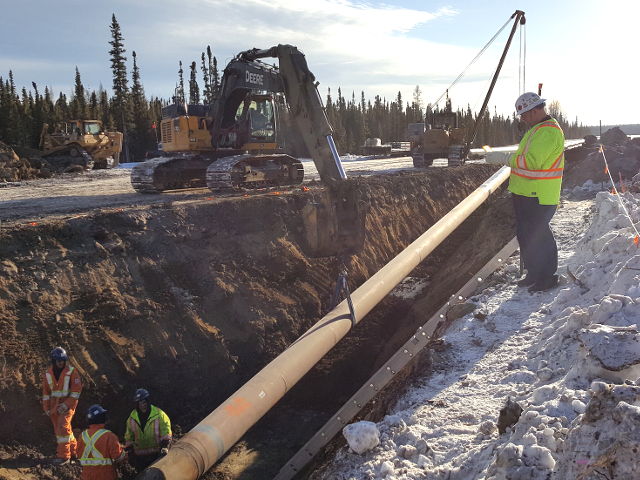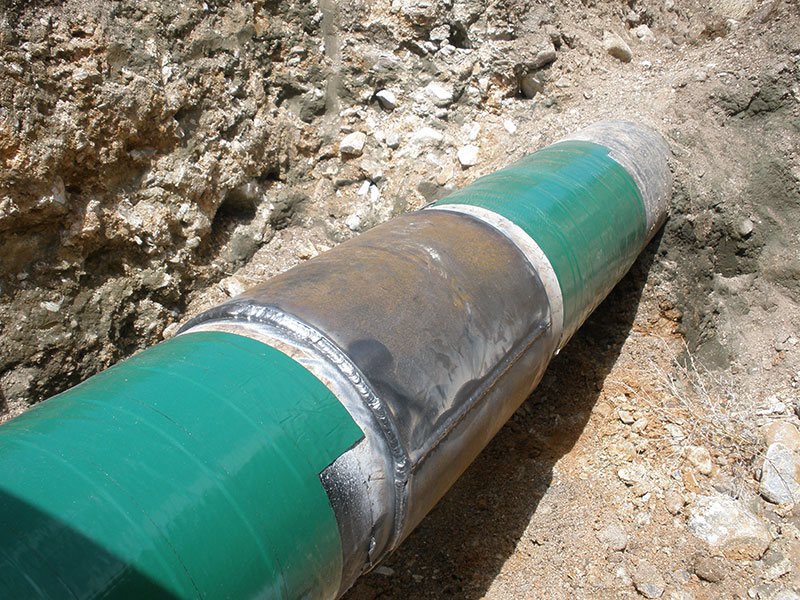Comprehensive Guide to Pipeline Welding Assessment: Guaranteeing Honesty and Safety in Pipeline Building And Construction and Maintenance
The stability and safety and security of pipes are paramount in today's infrastructure landscape, underscoring the critical role of welding inspection in pipe building and construction and upkeep. Pipeline Welding Inspection. The complexities involved in welding inspection raising essential concerns regarding industry standards and the evolving modern technologies that might redefine these practices.

Importance of Welding Examination
Welding assessment plays an important function in ensuring the stability and safety of pipe systems. It serves as a fundamental procedure that verifies the top quality and dependability of bonded joints, which are commonly the most at risk points in pipe construction. With systematic examination, inspectors can determine potential flaws such as cracks, porosity, and incomplete blend, which may compromise the architectural stability of the pipe.
The value of welding inspection prolongs beyond plain conformity with industry requirements; it additionally safeguards public health and wellness and the environment. If failures occur, pipelines lugging unsafe materials position substantial threats. Effective assessment procedures aid prevent ruptures and leaks, reducing environmental damages and securing areas. Furthermore, complete examinations can enhance the longevity of pipeline systems, lowering the need for costly repair work and downtime.
Along with ensuring safety and compliance, welding assessment promotes a society of high quality guarantee within companies. By focusing on inspection throughout the welding procedure, companies can build an online reputation for reliability and quality, inevitably resulting in boosted client confidence and organization chances (Pipeline Welding Inspection). Hence, the value of welding examination can not be overemphasized in the context of pipeline construction and upkeep
Secret Welding Procedures
Different welding procedures are utilized in pipe building, each with its very own advantages and applications. Amongst the most extensively utilized methods are Secured Steel Arc Welding (SMAW), Gas Tungsten Arc Welding (GTAW), and Gas Metal Arc Welding (GMAW) SMAW is preferred for its adaptability and ability to perform well in various environmental conditions, making it ideal for field applications.
GTAW, often referred to as Tungsten Inert Gas (TIG) welding, is recognized for its ability to create high-grade welds with superb control over warmth input, making it ideal for thin-walled pipelines and stainless steel materials. GMAW, or Steel Inert Gas (MIG) welding, supplies high deposition prices and is reliable for large-scale projects, frequently used in the manufacture of pipelines in regulated environments.
Furthermore, Immersed Arc Welding (SAW) is used for its deep infiltration and high productivity, specifically in the construction of large-diameter pipelines. Each of these procedures contributes to the overall honesty and safety and security of pipe constructions, allowing welders to select one of the most ideal approach based upon material type, job demands, and ecological problems. Understanding these vital welding procedures is necessary for reliable pipe welding examination.
Usual Issues and Their Impact

Porosity, characterized by small gas pockets entraped within the weld, damages the product and can cause leakages. Fractures, which may occur as a result of thermal stress and anxieties or inappropriate air conditioning, can circulate and result in structural failing under stress. Undercutting, where the base metal is deteriorated along the weld bead, reduces the reliable cross-section of the pipeline, increasing the threat of fracture.
Insufficient combination occurs when the weld steel does not correctly bond with the base steel, leading to weak locations that might fail under stress and anxiety. Slag addition, the entrapment of non-metallic material within the weld, can likewise weaken the joint's honesty. Determining and addressing these flaws early in the construction procedure is important to ensuring the lasting dependability and safety and security of pipeline systems, therefore securing both the facilities and the setting.
Assessment Techniques and Devices

Aesthetic examination is the initial line of protection, allowing inspectors to recognize surface area irregularities, misalignment, or other noticeable flaws. Ultrasonic testing utilizes high-frequency acoustic waves to detect inner imperfections, supplying precise depth dimensions and defining problems without damaging the weld. Radiographic testing utilizes X-rays or gamma rays to produce photos of the weld, making it possible for the recognition of interior voids, splits, or additions.
Magnetic particle screening is particularly effective for spotting surface area and near-surface stoppages in ferromagnetic materials. This technique entails applying a magnetic field and great iron particles to the weld, disclosing problems via the buildup of read the full info here particles at flaw websites.
In addition to these methods, specialized tools such as automated ultrasonic testing equipment and digital radiography systems enhance examination accuracy and performance, making sure a comprehensive analysis of pipeline welds throughout construction and maintenance.
Ideal Practices for Compliance
Sticking to ideal practices for conformity in pipe welding evaluation is crucial for making sure the integrity and security of the framework. Organizations must establish a detailed quality management system that lines up with sector requirements such as ASME, API, and AWS. This consists of establishing comprehensive welding treatments that specify the methods, materials, and qualifications needed for welders.
Normal training and qualification of inspection personnel are necessary to keep high expertise degrees. Assessors must know with numerous non-destructive screening (NDT) techniques, including ultrasonic testing, radiographic testing, and aesthetic examination, to properly recognize possible flaws.
Paperwork plays an important role in compliance; keeping precise records of evaluations, weld treatments, and workers certifications helps to ensure traceability and liability. Set up audits and evaluations of welding practices should be performed to determine areas for renovation and make sure adherence to established methods.

Final Thought
In conclusion, the execution of extensive welding evaluation methods is extremely important for ensuring the stability and safety of pipe construction and upkeep. By identifying flaws and employing innovative evaluation strategies, organizations can substantially enhance the top quality of welded joints. Abiding by best methods cultivates compliance with sector standards, eventually guarding public health and stopping ecological risks. Constant renovation in evaluation processes will certainly add to the longevity and dependability of pipe systems, emphasizing the crucial function of welding assessment in the sector.
The stability and safety of pipelines are critical in today's infrastructure landscape, underscoring the critical role of welding examination in pipe building and maintenance. Understanding these key welding procedures is crucial for reliable pipe welding evaluation.
Adhering to ideal techniques for compliance in pipeline welding you can try these out examination is vital for ensuring the stability and safety and security of the framework.In verdict, the application of rigorous welding examination procedures is critical for ensuring the honesty and security of pipe building and upkeep. Constant renovation in evaluation try this procedures will certainly add to the durability and reliability of pipe systems, underscoring the essential role of welding examination in the market.